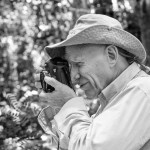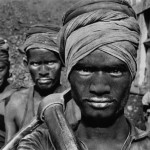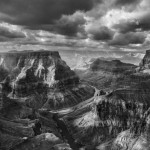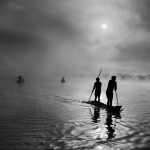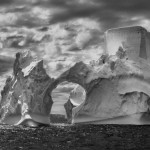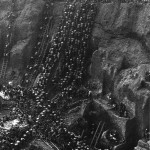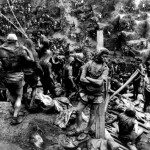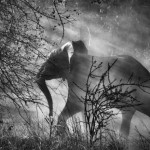Subscribe to Our Newsletter
Sebastiao Salgado: The Eye of the Heart
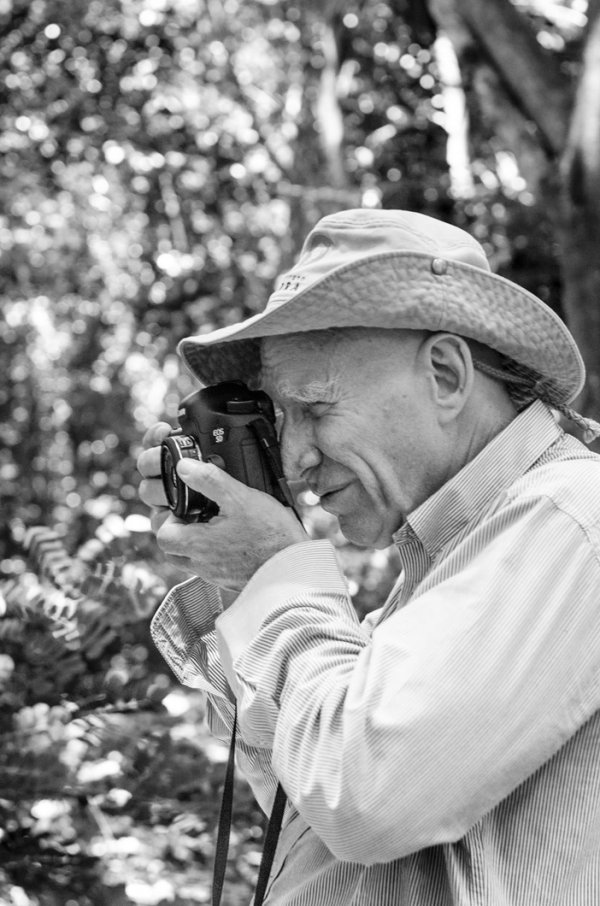
Sebastião Salgado’s visually stunning photographs accord equal respect to suffering humanity and primal nature.
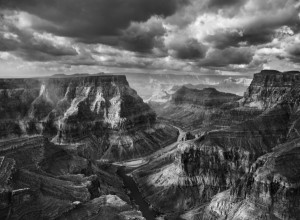
Sebastião Salgado, The Grand Canyon, with the confluence of the Colorado and the Little Colorado rivers seen from the Navajo territory, 2010;
Featured Images: (Click to Enlarge)
- Sebastião Salgado photographing.
- Sebastião Salgado, coal mining in the Dhanbad region of Bihar State, India, 1989.
- Sebastião Salgado, The Grand Canyon, with the confluence of the Colorado and the Little Colorado rivers seen from the Navajo territory, 2010;
- Sebastião Salgado, A group of Waura people fishing in the Piulaga Lake in the Upper Xingu Basin, Mato Grosso, Brazil, 2005;
- Iceberg between Paulet Island and the South Shetland Islands on the Weddell Sea, Antarctic Peninsula, 2005, photographed by Sebastião Salgado.
- Sebastião Salgado, Garimpeiros (independent gold prospectors) working in the open-top Serra Pelada gold mine, Brazil, 1986;
- Sebastião Salgado, Garimpeiros, Serra Pelada, Brazil, 1986;
- Sebastião Salgado, elephant, Kafue National Park, Zambia, 2010.
The photographer Sebastião Salgado isn’t used to being on the other side of the camera. For the past four decades he has traveled the world, documenting war and famine in East Africa, the genocide in Rwanda, indigenous communities in his native Brazil, and most recently wildlife and wild landscape in zones ranging from the tropic to the Antarctic. But in 2013 he consented to being the observed instead of the observer, as the subject of a feature-length documentary film about his life and work, The Salt of the Earth. Directed by Wim Wenders, the German filmmaker known for visionary works such as Wings of Desire, and made in collaboration with Salgado’s son, Juliano Ribeiro Salgado, the Oscar-nominated film shows the photographer at work in the field and at home with his family, supplemented by face-to-face interviews and a montage of Salgado’s black and white photographs spanning his entire career.
Those photographs, as voluminous as they are visually stunning, are instantly recognizable, byline or no. The Vietnamese boatmen pulling their launch onto a beach glassy with the incoming tide, set against a sky almost black with rainclouds; the view down into a gaping hole in the Brazilian mountains filled with subsistence gold-miners so numerous that they look like ants rather than human beings, while in the foreground a worker pausing to lean against a pole suddenly resembles Christ on the cross; the straining, oil-drenched firemen in Kuwait in 1991, in the aftermath of the first Gulf War, forcing their blackened bodies down on a burning gusher to quench it; the Bombay railway station in which the masses of people, their motion blurred by the camera, seem like a living river flowing around and through the unmoving train cars; a close-up of the blackened faces of Indian mine workers, their eyes shining and the picks on their shoulders gleaming—all of these share certain qualities that reveal the unique eye of Salgado.
He favors wide-angle compositions, unusual vantage points, a deep frontal gaze in portraiture, and a long tonal scale with an emphasis on rich, almost glowing darks. His pictures, although they are 35mm shots (recently digital) made in a basically photojournalistic mode, can resemble the painstakingly composed large-camera work of an Ansel Adams or an Edward Weston. In his most recent project, Genesis—contained in a massive book of that title published in 2013 by Taschen—Salgado took a turn away from the subjects he covered for most of the rest of his career, in projects such as Workers and Migrations, and focused his lens on nature and on people living in close harmony with nature. In these photographs, the print values, the contrast of lights and darks, take on a more lyrical, poetic quality than ever before.
Some of these pictures were taken from a helicopter, as shown in Salt of the Earth, which gives the photographer an almost trans-human point of view. In Genesis, rivers become ribbons of glittering mercury against a background of black earth, the Grand Canyon becomes a striped geode seen from afar, an elephant is glimpsed through a scrim of haze in a sun-stabbed rainforest, and an Amazonian tribesman seems to merge with a tree as he hangs from it with both arms. The pictorial values of these photographs, while astonishing enough in themselves, for Salgado are a way of communicating something to the viewer. Looking long and carefully at the images is one way of understanding what that something is; another is to look at the arc of Salgado’s own life.
Born on a farm in the Brazilian state of Minas Gerais in 1944, he was the only boy in a family with seven girls. In this rough and remote region, his father, also named Sebastião Salgado, was able to provide a decent standard of living by dint of incredibly hard work. In Salt of the Earth, the father, age 96 at the time of filming, makes an appearance, and his wizened face under a straw hat seems to match the landscape of his desiccated farm. The damage to the land, caused by irresponsible development by industrialists in the area, weighed heavily on the son. Over the past 10 years, he and his wife, Lélia Wanick Salgado, have embarked on a major project, called Instituto Terra, to revitalize and redevelop not only the farm but the area surrounding it, which they have helped convert into a national park.
Photography was not Salgado’s first career. His father had wanted him to be a lawyer, but instead he became an economist, in which capacity he traveled to developing countries all over the world, gathering statistical data for the London-based International Coffee Organization. In 1968–69, he and Lélia joined the leftist protests that convulsed Brazil, then controlled by a military dictatorship. When the protests failed, the Salgados went into exile in Paris, where they spent the next 10 years, with Sebastião continuing to pursue his economics work. Around the time Juliano was born, in 1974, Lélia bought a camera, just to take family snapshots. Sebastião picked it up and found himself using it far more than she did; before long he felt he had discovered his true calling.
In 1975, he quit his job to become a full-time freelance photographer. He recalls going from magazine to magazine, asking what they needed, willing to do anything at all as long as he could make a living taking pictures. For a while he accepted any assignment he could get. Ironically, some of his most-reprinted photographs come from a news assignment: In 1981 the New York Times Magazine sent him to follow Ronald Reagan, and Salgado happened to be on the scene when the president and several others were shot by would-be assassin John Hinckley in Washington, D.C. By then Salgado had already joined Magnum, the prestigious photographers’ cooperative founded by Robert Capa, Henri Cartier-Bresson, and George Rodger in 1947; previously he was affiliated with the France-based Sygma and Gamma press agencies. In 1994, Salgado left Magnum to found his own agency, Amazonas Images.
Beginning in the mid-’70s, Salgado returned to the embattled places he had once visited as an economist, this time with a camera in hand. He has referred to this work as “documenting the human condition,” but his pictures are more than just documents; they are calls to action. While the gaze in his pictures is unflinching, it is never unfeeling. Salgado puts his intense emotional reactions into the images, and the way he uses composition and light enables the viewer to take them out again. He recalls the way he felt when he first saw the miners at the Serra Pelada gold-prospecting site: “When I came to the edge of a huge hole in the ground the size of a soccer stadium, with 50,000 people in there working with no mechanical tools, only their hands, and this sound came up from their instruments digging, all the hairs on my body stood up. It is probably the strongest thing I ever felt in my life.”
In Salgado’s work, the emotional is inseparable from the graphic. Like his good friend, the late Henri Cartier-Bresson, he strongly favors black and white because it simplifies matters, cutting away the inessential. “I completely lose my concentration when I photograph in color,” Salgado says. “The influence of strong colors inside a photo for me is disturbing. Of course black and white is an abstraction, but it’s one that allows you to concentrate only on your interest point—the personality, the movements of the person, not the shirt they are wearing.” His favorite photographer is Bill Brandt, a master of black and white and avant-garde composition whose concerns were very remote from Salgado’s. He also loves the Mexican Surrealist Manuel Alvarez Bravo and the Peruvian Martín Chambi, who worked in obscurity in the Andean town of Cuzco. However, he says, “I cannot say that they had any influence on my photography. In photography there is no influence; it’s a way of life. You photograph with your family, with your life, with what you bring from inside of you.”
Some critics have objected that Salgado’s photographs are too visually impressive, too cinematic for the subject matter. In a 2002 New Yorker essay, Susan Sontag—a critic notably uncomfortable with the very nature of photography—wrote, “Sebastião Salgado, a photographer who specializes in world misery (including but not restricted to the effects of war), has been the principal target of the new campaign against the inauthenticity of the beautiful.” For Salgado, though, there is nothing inauthentic about beauty, especially because in his conception of things, the beauty emanates from within his subjects, both human and non-human. Wim Wenders has answered Sontag’s objection by saying, “When you photograph poverty and suffering, you have to give a certain dignity to your subject, and avoid slipping into voyeurism. It’s not easy. It can only be achieved on condition that you develop a good rapport with the people in front of the lens, and you really get inside their lives and their situation. Very few photographers manage this.”
Juliano Salgado, speaking on the same question, has said that his father “needs to create a relationship with the person he’s going to photograph, and says that it is the subject who ends up ‘giving’ him the photo.” Salgado himself puts it this way: “It’s very difficult when you go to photograph something. You must concentrate and receive from what you are photographing. You must deeply give yourself to what you are doing. You are taking the image and representing it to someone, which is a very complicated situation. A very, very special thing is happening to you. You are no longer the same person.”
The fact that Genesis is largely about planet Earth itself and its non-human inhabitants might make one think that Salgado has changed his priorities or is looking for a different mode of experiencing the world. But he sees total continuity: “All my pictures are inside nature. I grew up on a farm. Nature is inside me. In the end, to photograph a tree or a mountain is not different from photographing a human being. You must respect the tree, understand that someone alive, with a personality, is in front of you. Some trees are 2,000 years old. You are in front of an authority, and you must respect that authority.”
There is also total continuity between Salgado’s photographic work and the conservation work that he and his wife have spearheaded. In the Salgados’ optimistic vision, it is not too late to return nature to its original condition. Instituto Terra has planted 2.5 million trees on the former Salgado farm and another million on the surrounding land. Salgado proudly points out that there are now 170 distinct species of birds living there, and that even the jaguars have returned to the area.
Salgado’s outlook is fundamentally Romantic, in the 19th-century sense of experiencing nature as the primary source of spiritual renewal. In a way he is a kindred spirit of artists such as Caspar David Friedrich and Frederic Edwin Church. And like the Romantics, he believes that it is possible for human beings to live in complete harmony with nature. Of all the people he has interacted with in some 35 countries, his favorite are the Zo’é of the Amazon rainforest, whom he photographed for Genesis. A tiny tribe of 300, they live a subsistence lifestyle, isolated from most outside influences. “When I met them,” says Salgado, “they were living in paradise. It’s an incredibly beautiful land. They have incredible health, you cannot imagine. They have no gods, no religion, no chiefs, no property. They hunt naked with arrows and bows. They know everything; they are fantastic. They are real, real people from the beginning.” Hearing him talk this way, one cannot help thinking of his fellow Brazilian, the early 20th-century writer Euclides da Cunha, who referred to the Amazon as “the last, unfinished page of Genesis.”

